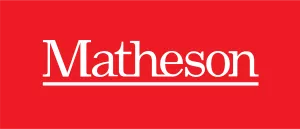- within Compliance and International Law topic(s)
Why are Green Lease Clauses so important?
The new Green Lease Toolkit which has been launched by the Better Buildings Partnership in the UK is sure to inform thinking, not just in the UK, but here in Ireland and further afield too, as to how green lease clauses can be used to improve the energy performance and social impact of commercial buildings.
A startling statistic that we need to continue to remind ourselves of is that the Real Estate sector accounts for approximately 40% of total global carbon emissions.
An important step towards reaching the destination of "net zero" by 2050 will be for owners and occupiers to take positive action in terms of managing and improving the environmental and social performance of buildings. Documenting sustainability commitments by incorporating green lease clauses into commercial leases is therefore becoming increasingly relevant and important and not just in new leases.
What is the Green Lease Toolkit?
The Toolkit provides an excellent resource for owners, occupiers, investors and lawyers in terms of gaining a better understanding as to the key areas which should be covered by green lease clauses. Some of the essential areas that are recommended include:
(i) Co-operation;
(ii) Building Management / Sustainability Group;
(iii) Sustainable Use;
(iv) Data Sharing and Metering;
(v) Tenant's Alterations;
(vi) Waste (Landlord & Tenant) and;
(vii) Reinstatement (Yield-Up).
Acknowledging that there will not be a one size fits all approach for every situation, the Toolkit offers a menu of options to be chosen from, which range from light, medium to dark green obligations. The light green options are more flexible and will likely be chosen by those starting off on their sustainability journey or with existing stock, while the medium to dark green options are more stringent obligations that may be adopted by those taking a more ambitious and transformative approach and with new builds.
The Heads of Terms (HoTs) stage of a lease transaction is a crucial time to address the issue of green provisions. Introducing the concept when drafting and negotiating the lease is often too late to achieve meaningful and effective obligations. The Toolkit provides guidance in relation to including such green lease terms in the HoTs which will be helpful to agents, owners and occupiers alike. We suggest that owners and occupiers could look to introduce green lease clauses into existing lease arrangements at any stage not just at the outset as they benefit both landlord and tenant alike and the only way we will achieve "net zero" by 2050 is by working together.
As owners and occupiers take action to enhance the sustainability of commercial buildings by agreeing green lease clauses, this Toolkit will be a helpful "go to" for knowledge, insights and practical guidance.
The content of this article is intended to provide a general guide to the subject matter. Specialist advice should be sought about your specific circumstances.



